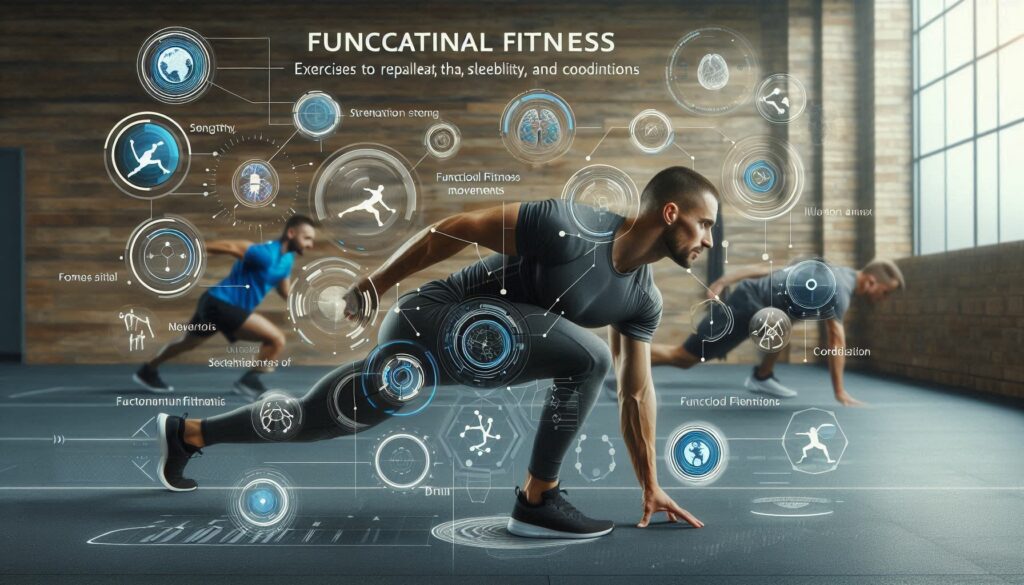5 Must-Know Fitness Trends That Work (And 3 You Should Ignore)

In the dynamic world of fitness, trends come and go with astounding rapidity. One day, it’s all about the latest exercise fad and the next, it’s a new nutritional supplement promising miraculous results. For fitness enthusiasts, the abundance of options can be both exciting and overwhelming. How do you sift through the noise to find what truly makes a difference? This comprehensive guide will walk you through five fitness trends that are proven to deliver real benefits and highlight three popular trends that might not be worth your time.
Introduction
Navigating the fitness landscape can feel like trying to catch a moving target. Every week, new trends emerge, each claiming to be the key to achieving your fitness goals faster and more effectively. While some of these trends offer legitimate benefits, others are nothing more than fleeting fads.
The challenge lies in distinguishing between the trends that have a solid foundation of evidence supporting their efficacy and those that are just flashy marketing gimmicks. This article aims to clear up the confusion by spotlighting five fitness trends that have proven their worth and providing a critical look at three trends that you might want to skip.

5 Must-Know Fitness Trends That Work
1. High-Intensity Interval Training (HIIT)
Overview: High-Intensity Interval Training (HIIT) has surged in popularity due to its efficiency and effectiveness. This workout method alternates between short bursts of intense exercise and periods of lower-intensity recovery. HIIT has been shown to enhance cardiovascular health, improve metabolic rate, and burn fat more effectively than traditional steady-state cardio.
Benefits:
| Benefit | Description |
|---|---|
| Efficiency | Achieve significant results in a shorter period, often within 15-20 minutes. |
| Increased Metabolism | Boosts post-exercise calorie burn, known as excess post-exercise oxygen consumption (EPOC). |
| Improved Cardiovascular Health | Enhances heart and lung capacity, reducing the risk of heart disease. |
Example Workout: A typical HIIT session might include 30 seconds of sprinting followed by 30 seconds of walking, repeated for 10-15 minutes. Studies indicate that HIIT can be as effective as an hour of moderate exercise.
2. Functional Fitness
Overview: Functional fitness focuses on exercises that replicate real-life movements, enhancing strength, flexibility, and coordination. These workouts are designed to improve your ability to perform everyday tasks more efficiently and safely.

Benefits:
| Benefit | Description |
|---|---|
| Improved Daily Functionality | Exercises mimic daily movements, making everyday tasks easier. |
| Reduced Injury Risk | Strengthens muscles and improves balance, decreasing the likelihood of injuries. |
| Versatility | Can be adapted for various fitness levels and needs. |
Example Exercises: Squats, lunges, kettlebell swings, and medicine ball throws are all functional exercises that target multiple muscle groups simultaneously.
3. Mind-Body Workouts
Overview: Mind-body workouts such as yoga and Pilates emphasize the connection between mental focus and physical movement. These practices are renowned for enhancing flexibility, core strength, and mental clarity.
Benefits:
| Benefit | Description |
|---|---|
| Enhanced Flexibility | Increases range of motion and reduces stiffness. |
| Core Strength | Strengthens the muscles of the abdomen and lower back, improving posture. |
| Stress Reduction | Promotes relaxation and reduces stress through mindful breathing and controlled movements. |
Example Practice: A yoga session might include a series of poses like Downward Dog and Warrior II, combined with deep breathing exercises. Research shows that regular practice can lead to improvements in mental health and physical well-being.
4. Wearable Technology
Overview: Wearable technology, including fitness trackers and smartwatches, has revolutionized personal fitness by providing real-time data on various health metrics. These devices help users monitor their progress and adjust their workouts based on actionable insights.

Benefits:
| Benefit | Description |
|---|---|
| Real-Time Feedback | Provides immediate data on heart rate, steps, and calories burned. |
| Personalized Insights | Tracks progress and suggests adjustments based on performance data. |
| Motivation | Encourages adherence to fitness goals through notifications and achievements. |
Example Devices: Fitness trackers like Fitbit or Apple Watch monitor heart rate, steps, and sleep patterns, helping users make informed decisions about their health.
5. Personalized Nutrition Plans
Overview: Personalized nutrition plans are tailored to individual needs based on factors such as genetic data, activity levels, and health goals. This trend moves away from generic diets and provides specific dietary recommendations designed to optimize performance and recovery.
Benefits:
| Benefit | Description |
|---|---|
| Customized Nutrition | Meal plans are tailored to individual needs, improving nutrient intake and overall health. |
| Enhanced Performance | Supports fitness goals by aligning diet with specific training demands. |
| Better Health Outcomes | Reduces the risk of nutritional deficiencies and chronic diseases. |
Example Service: Companies like Nutrigenomix offer genetic testing to create personalized meal plans that cater to your unique metabolic profile.
3 Fitness Trends You Might Want to Skip
1. Juice Cleanses
Overview: Juice cleanses are often marketed as a quick fix for detoxification and weight loss. However, these programs are typically low in essential nutrients and can lead to imbalanced nutrition.
Drawbacks:
| Drawback | Description |
|---|---|
| Nutritional Imbalance | Lacks essential proteins, fats, and other nutrients needed for optimal health. |
| Short-Term Results | Often leads to temporary weight loss that is quickly regained. |
| Possible Health Risks | Can cause digestive issues and low energy levels due to insufficient caloric intake. |
2. Ab Machines
Overview: Ab machines promise to target and tone the abdominal muscles with minimal effort. While they may engage the core, they often do not provide comprehensive strength training or address overall fitness.
Drawbacks:
| Drawback | Description |
|---|---|
| Limited Effectiveness | Does not offer a full-body workout or address overall fitness. |
| Overemphasis on Abs | Focusing solely on ab exercises without incorporating other muscle groups is less effective. |
3. Extreme Diets
Overview: Extreme diets, such as very low-carb or very low-fat regimes, promise rapid results but can be unsustainable and potentially harmful in the long run.
Drawbacks:
| Drawback | Description |
|---|---|
| Unsustainable | Difficult to maintain over the long term, leading to possible rebound weight gain. |
| Nutrient Deficiency | Can result in deficiencies in essential vitamins and minerals. |
| Negative Health Effects | May lead to adverse effects such as fatigue, headaches, or digestive issues. |
Conclusion
Navigating fitness trends can be a daunting task, but understanding which trends offer genuine benefits and which are best left alone can make your fitness journey more effective and enjoyable. High-intensity interval training, functional fitness, mind-body workouts, wearable technology, and personalized nutrition plans are trends that provide substantial, evidence-based benefits. In contrast, juice cleanses, ab machines, and extreme diets often fall short of delivering sustainable, long-term results.
As you evaluate these trends, consider how each aligns with your personal goals and lifestyle. Are you ready to enhance your workouts with evidence-backed strategies, or will you continue to chase fleeting fads? The fitness world is ever-evolving, and staying informed is key to achieving lasting success.
What new trend will you explore next? Could it be one of the promising ones we’ve discussed, or are you curious about another emerging practice? Stay tuned, as the next wave of fitness innovations is just around the corner, and it might hold the key to your next breakthrough.












